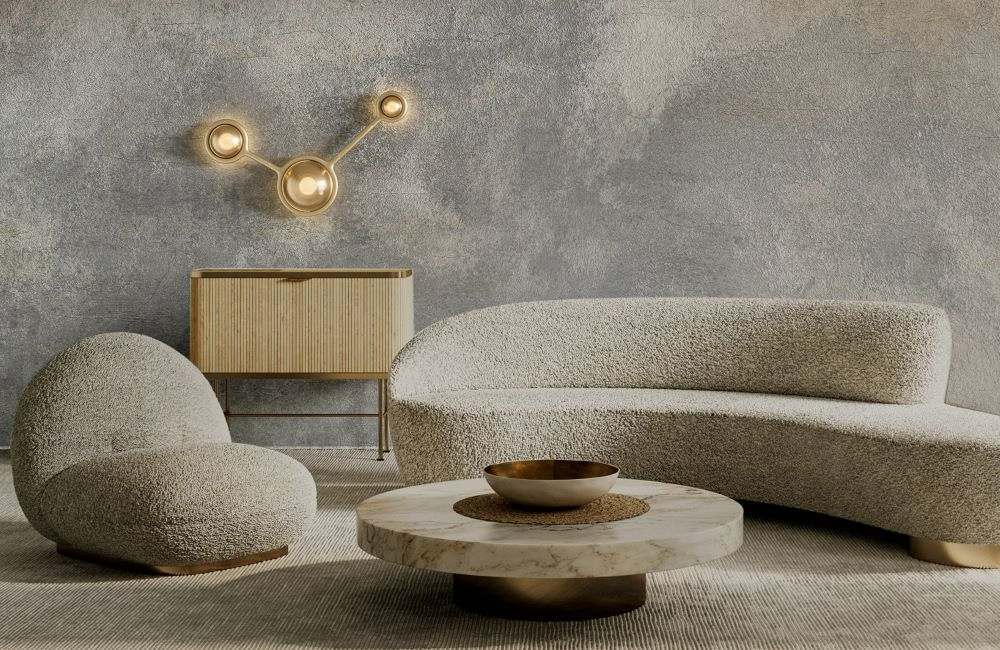One of over 200 light sculptures designed by Isamu Noguchi, featured in the exhibit, Akari: Sculpture by Other Means
Isamu Noguchi's light sculptures—Akari, a term he coined, which translates loosely as light or illumination—are so familiar, it's easy to ignore them amidst the slew of knock-offs that litter the contemporary design landscape. But anyone interested in understanding why Noguchi's Akari remain a singular artistic achievement may want to visit Akari: Sculpture by Other Means, a joyful, exceedingly beautiful exhibit currently on view at the Noguchi Museum in Queens, New York. Equally captivating to children and adults, the exhibit is also poetic and moving, much like Akari themselves, presenting a comprehensive overview of the hundreds of paper forms Noguchi created, dating back to the 1950's, and features a series of installations that includes the largest-ever Akari the artist designed.
Noguchi, the son of a Japanese poet and American writer, was one of the 20th Century's great sculptors, a prolific creative force who blurred the line between art and design with an oeuvre that comprised monumental stone sculptures , interior design schemes, stage set designs, and, arguably, the most replicated coffee table of the modern age. But for Noguchi, who was deeply informed by his Japanese heritage, the Akari series remains the most visually direct link to his paternal homeland. Akari: Sculpture by Other Means provides an illuminating history of Noguchi's lighting designs, their inception originating in a 1951 visit to Gifu City, a small Japanese town famous for paper lanterns made from the bark of the mulberry tree. Devastated by the war, and seeking a path to revitalization, Gifu City's mayor sought Noguchi's help in modernizing his town's paper lantern-making industry. The light bulb and Noguchi's finely tuned eye for elegant forms turned the traditional candle-lit Japanese paper lantern into the glowing light sculptures for which the artist may be best known today.
Remarkably, Noguchi created more than 200 Akari models during his lifetime—forms innovative enough to have yielded dozens of patents in both the U.S. and Japan.
Ubiquitous though Akari may be now, when first exhibited at the Museum of Modern Art in 1952, Noguchi's light sculptures were revolutionary. Rather than conforming to traditional Gifu lantern shapes, Akari presented unusual organic and geometric volumes, sometimes asymmetrical, that defied expectations of what a paper lantern was supposed to look like, and eliciting critical words like 'deformed' and 'strange.'
Noguchi's Akari light sculptures modernized traditional Japanese Gifu lanterns.
An 8 ft cube of Akari panels forms a room visitors can enter.
Noguchi created more than 200 Akari models during his lifetime—a remarkable fact that will come as a surprise to even the most ardent Noguchi admirers—compositions innovative enough to have yielded dozens of patents in both the U.S. and Japan. Many of the more familiar lamps are on display in this exhibit, along with less familiar works, like Akari PL1, a rare composition of right angles, which hangs suspended, untethered panels gently moving in tandem with airflow. It's one of two site-specific pieces in the exhibit which were constructed for Noguchi's installation at the 1986 Venice Biennale, along with Akari 200D, an outsized globe, measuring more than 6 1/2 feet in diameter.
Shape, of course, is only half the magic of Akari. Translating electricity's harsh light into the nuanced glow of traditional candle-lit lanterns was as revolutionary to modern lighting as Noguchi's graceful volumes. In the artist's words: “The light of Akari is like the light of the sun filtered through the paper of shoji. The harshness of electricity is thus transformed through the magic of paper back to the light of our origin—the sun—so that its warmth may continue to fill our rooms at night.”
Shape is only half the magic of Akari. Translating electricity's harsh light into the nuanced glow of traditional candle-lit lanterns was as revolutionary to modern lighting as Noguchi's graceful volumes.
The importance of Akari within the enviable body of work Noguchi left behind, will, no doubt, continue to be debated. The intrinsic fragility, popularity, and relative accessibility of the works—qualities that Dakin Hart, Senior Curator of the Noguchi Museum, accurately describes as 'collapsable and lightweight; easily stored, shipped and installed...' automatically render these light sculptures lesser works in a world-renowned career. But Noguchi himself clearly felt otherwise, choosing to include Akari in his Venice Biennale installation, alongside undeniably important works in stone and marble. “For me, function was only an initial consideration; my main purpose has always been art as it relates to life. I work with the gamut of possibilities. Inherent in Akari are lightness and fragility. They seem to offer a magical unfolding away from the material world.” Much as this beguiling exhibit unfolds—magically.
On the main floor of the exhibit, an installation of Akari Clouds, featuring orbs of varying sizes, greets visitors.
—Via Noguchi Museum; Photographs: Promila Shastri








